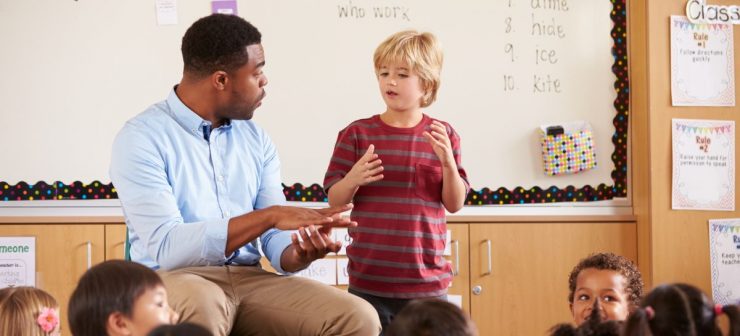
SPED: Not All Schools Are Created Equal
October 29, 2019
Public or private schools: one is required by law to accommodate students with special needs and one is not.
The CDC reports children diagnosed with autism (1 in 59) and ADHD (6.1 million diagnosed) continues to climb each year. In addition, 2 out of 3 children diagnosed with ADHD have a least one other mental, emotional, or behavioral disorder. As more children are identified, public and private schools are faced with the challenge of meeting the child’s special needs in the classroom.
A child identified with a special need who is attending a public school, according to the Individuals with Disabilities Education Act (IDEA), can either have a 504 plan or an Individualized Education Program (IEP) in place.
IDEA requires public schools to provide free and appropriate public education to eligible children with disabilities. It ensures the child receives related services such as physical therapy, occupational therapy, specialized therapy, and adaptive PE.
The 504 plan comes from Section 504 of the Rehabilitation Act of 1973, and is meant to improve access to accommodations for special needs students in public schools, ensuring academic success.
An IEP is a legal document that identifies the student’s disability according to IDEA. An IEP is for those students with disabilities that require specialized educational instruction and related services. It is more involved than a 504 plan and requires a plan of goals and growth.
Public schools are required by law to have IEPs in place for all eligible students and to provide special education and related services, including instructional time and the frequency and duration of related services.
Public schools are also mandated by law provide 504 plan accommodations as recommended for identified students. A 504 plan may include accommodations that can be provided in a regular education classroom such as preferential seating, extended time, or a pencil grip.
More children identified as special needs means more are applying to private or independent schools. However, these schools are not required by law to provide IEPs or 504 plans. Just as they have the right to accept or not accept students at will, they have the choice to provide accommodations or not.
However, many private and independent schools have recognized the need for individualized learning. Many of these schools now have support built in with speech therapists and reading interventionist on staff, and allow outside service providers to work with a student during the school day.
Many families look to private and independent schools as an option for their child with special needs as they often offer small class sizes, individualized attention, various approaches to learning, and the freedom to adapt curriculum as needed.
For parents of special needs students looking for a private school, it is important to always be upfront and honest. This may include providing current and past evaluations and signing release forms for the school to communicate with outside providers or medical staff. It is also important to ask these questions:
- Is there a learning specialist or resource support personnel on campus?
- If so, how is the need for a learning specialist determined? What is the cost?
- Is resource support provided in a small group, individual, or consult basis?
- Are outside providers (private or public) allowed on campus?
- How often are meetings held with teachers, families, and resource support to discuss the child’s progress?
- What are some examples of accommodations that can be provided?
- Is there small group or levelized instruction for certain subjects?
 Kimberly Bradley, M.S., L.O.T.R., is a pediatric occupational therapist and owns Kim4Kids in Metairie. She can be reached at 504.517.5437; kim4kidsnola.com.
Kimberly Bradley, M.S., L.O.T.R., is a pediatric occupational therapist and owns Kim4Kids in Metairie. She can be reached at 504.517.5437; kim4kidsnola.com.

